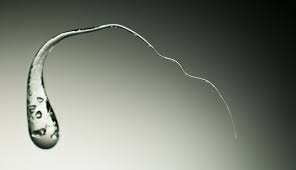How This Glass Bead That Looks Like A Tadpole Breaks A Bullet
Glass may be fragile, as we all know, therefore we treat them with additional care to avoid breaking them. However, did you know that glass can be made so tough that an axe or even a bullet cannot break it when it is molded into a certain shape? Rather, the bullet may break apart as it hits. Prince Rupert’s Drop is the name of this glass, and a social media video of it has gone viral.
Another name for Prince Rupert’s Drop is Dutch or Batavian tears. They are essentially glass beads that have been toughened by submerging molten glass in cold water, which causes the glass to harden into a transparent droplet that resembles a tadpole and has a long, thin tail. While breaking off the rounded drop appears almost impossible, snapping the tail is relatively simple. The aforementioned video is doing the rounds online and has created a lot of interest.
A Prince Rupert’s Drop footage was posted on X, which was once known as Twitter. The amazing video shows how a glass drop can withstand pressure equal to that of a hydraulic machine and still produce dents. It also illustrates how a bullet shatters when it strikes a drop. The voiceover opens with the statement, “Unironically, glass is the strongest object in the world.” It doesn’t take long for melted glass submerged in frozen water to change into what is known as Prince Rupert’s Drop—a almost indestructible droplet. The video also shows it being tested against an actual bullet, which breaks instantly when it hits it.
The drop manages to ding the machine but does not shatter when it is subjected to the pressure of 40 tons (40,000 kg) of a hydraulic press. But a little pressure on the drop’s tail will make it crumble.
The melting point of glass is 1,400–1,600 degrees Celsius. The molten glass quickly cools on the surface of the bead when it is dropped into a tank of cold water by a glassmaker, producing a solid shell around the liquid inside. The glass retracts by drawing the outside layer within as it cools more. As a result, the drop experiences extreme stress due to the inner core being firmly squeezed. The enormous force aids in binding the layers together to form a glass shock absorber.







